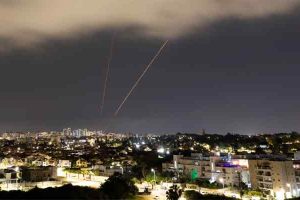
In a ceremony earlier this month honoring the Army football team, President Trump took a rhetorical detour to the military’s potential future in outer space.
“You will be part of the five proud branches of the United States Armed Forces: Army, Navy, Marines, Air Force and the Coast Guard,” Trump said. “And we’re actually thinking of a sixth, and that would be the Space Force. Does that make sense? Because we’re getting very big in space, both militarily and for other reasons. And we are seriously thinking of the Space Force.”
It wasn’t the first time he had mentioned the idea, which he first broached while speaking to Marines in California in March.
“You know, I was saying the other day because we’re doing a tremendous amount of work in space, maybe we need a new force,” Trump said. “We’ll call it the Space Force. And I was not really serious, and then I thought, ‘Maybe that’s a great idea. Maybe we’ll have to do that.’ ”
As Trump’s offhand comments implied, there is no official plan for something called “Space Force,” and there is opposition within the administration itself, including from Defense Secretary James Mattis. But the idea is popular with some in Congress. While the Air Force has had a Space Command division since 1982, some legislators and analysts believe the military needs a new branch devoted to warfare beyond the atmosphere.
The immediate future of space combat will almost certainly be less romantic than it sounds, less about X-wing vs. TIE fighter dogfights between rocket-jockey pilots than about protecting America’s military satellites in orbit and incapacitating an enemy’s. Satellites are expensive but critical to the U.S. effort, providing GPS, reconnaissance, communications and early detection of missile launches. But they’re also difficult to maneuver, almost impossible to repair and would likely become key targets in any future war. A 2000 report assessing the country’s space capabilities warned of the danger of a potential “Pearl Harbor in space.”
The race to find a technology to destroy satellites started shortly after the Soviet Union launched Sputnik I in 1957, raising fears of a nuclear attack from space. Over the ensuing decades the military researched various approaches, including a 1985 test in which the Air Force shot an American satellite out of the sky with a missile from an F-15 fighter plane.







